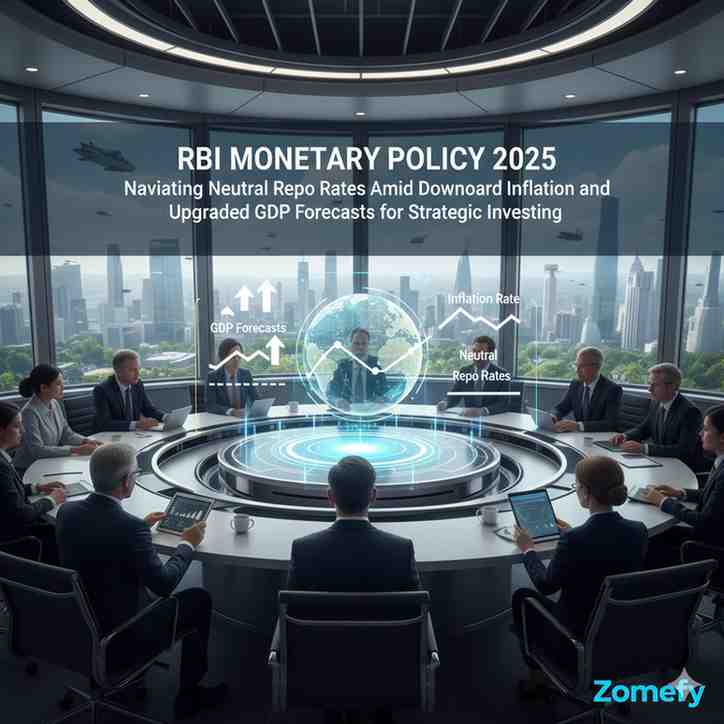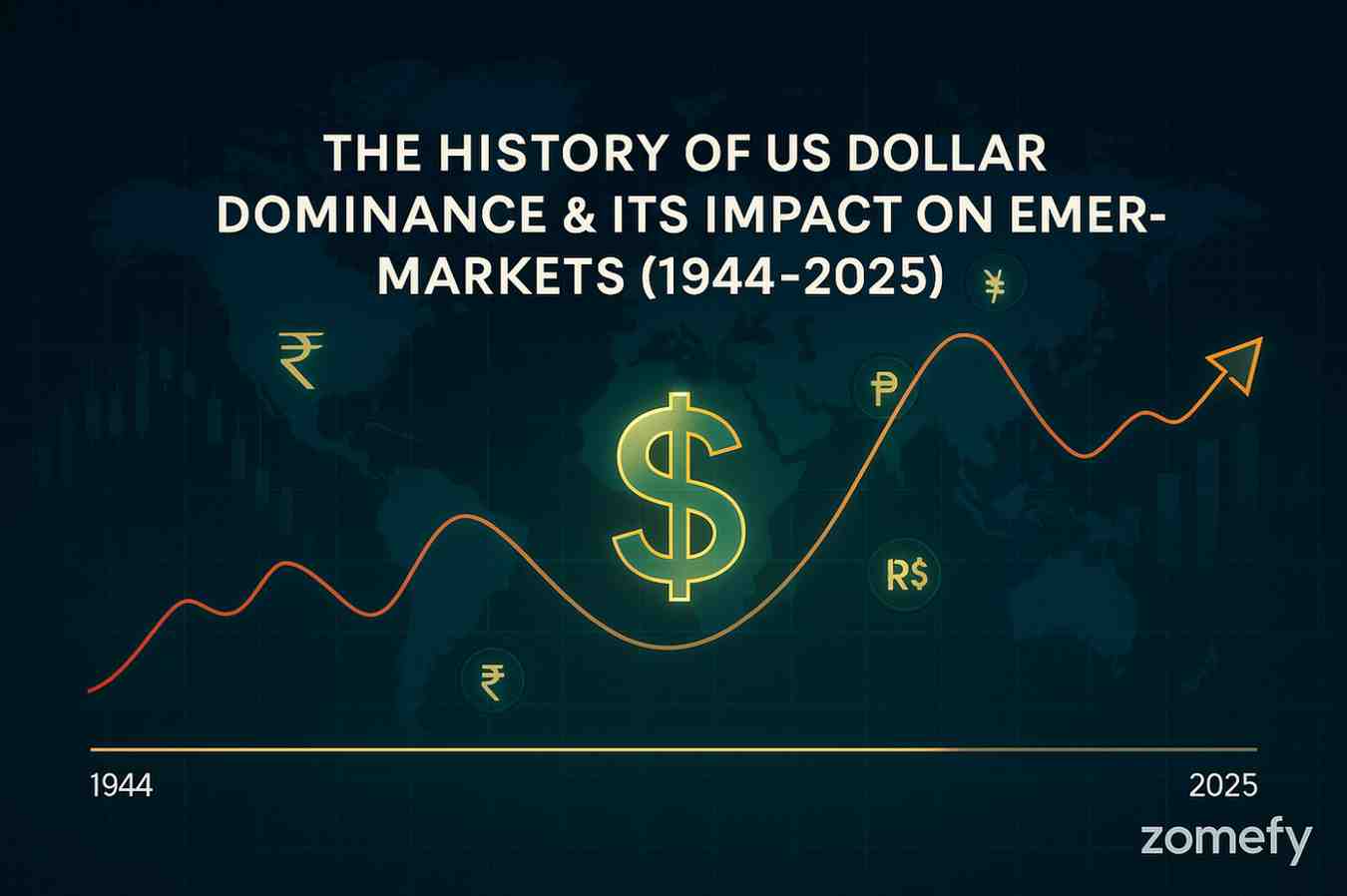India’s Commodity Crunch 2025: Decoding Gold, Crude, and Agri Price Trends for Strategic Portfolios
India’s commodity markets are at a pivotal juncture in 2025, shaped by global economic shifts, domestic policy dynamics, and evolving investor behavior.
India’s Commodity Crunch 2025: Decoding Gold, Crude, and Agri Price Trends for Strategic Portfolios
What You Can Do Next
- Read the full article for complete insights
- Save for later reference
- Share with others learning about this topic
Image not available
India’s commodity markets are at a pivotal juncture in 2025, shaped by global economic shifts, domestic policy dynamics, and evolving investor behavior. With commodities like gold, crude oil, and agricultural products forming the backbone of both the Indian economy and retail investment portfolios, understanding their price trends is critical for strategic asset allocation. The year 2025 is witnessing a complex interplay of factors including subdued global demand, supply-side adjustments, and geopolitical tensions, all influencing commodity prices. For Indian retail investors and financial professionals, decoding these trends offers opportunities to hedge inflation, diversify risk, and capitalize on sector-specific growth. This article delves into the current and forecasted price movements of gold, crude oil, and key agricultural commodities within the Indian context, providing actionable insights and risk considerations to build resilient, forward-looking portfolios.
Gold in 2025: Safe Haven Amid Volatility
Gold continues to hold a unique position in Indian portfolios, driven by cultural affinity, inflation hedging, and portfolio diversification. Despite a global commodity price downturn projected by the World Bank with an overall 12% decline in 2025, gold prices have shown resilience due to geopolitical uncertainties and inflationary pressures in India.
Gold Price Trends | 2024 | Mid-2025 | YoY Change (%) | Key Drivers |
|---|---|---|---|---|
| MCX Gold Futures (₹/10g) | ₹53,400 | ₹55,000 | +3.0% | Geopolitical tensions, inflation |
| International Gold ($/oz) | $2,020 | $2,050 | +1.5% | Safe haven demand |
| Gold ETF Inflows (₹ Cr) | ₹2,850 | ₹3,200 | +12.3% | Digital platform adoption |
| Physical Gold Demand (Tonnes) | 745 | 780 | +4.7% | Festival & wedding season |
As of mid-2025, MCX gold futures prices hovered around ₹55,000 per 10 grams, reflecting a modest 3% year-on-year increase despite broader commodity softness. Indian demand remains robust, fueled by wedding season purchases and festival demand, with rural buying supported by improved liquidity and government stimulus measures.
Gold Investment Options | Liquidity | Returns Potential | Risk Level | Min Investment | Tax Efficiency |
|---|---|---|---|---|---|
| Physical Gold | Low | Moderate | Low | ₹5,000 | Low |
| Gold ETFs | High | Moderate | Low | ₹1,000 | Moderate |
| Sovereign Gold Bonds | Low | High | Low | ₹5,000 | High |
| Gold Mutual Funds | High | Moderate | Low | ₹500 | Moderate |
| Digital Gold | Moderate | Moderate | Low | ₹100 | Low |
Investment demand via sovereign gold bonds and ETFs has also seen a steady uptick, with retail investors increasingly leveraging digital platforms for gold exposure. However, rising US interest rates and a strengthening dollar pose downside risks. Indian financial regulators continue to encourage gold monetization schemes, which aim to reduce import dependence and improve liquidity. For investors, tactical exposure to gold through diversified instruments—physical, ETFs, and sovereign bonds—can provide a hedge against inflation and currency volatility. Key domestic players such as MMTC-PAMP and PC Jeweller remain integral to the supply chain and market sentiment. Caution is warranted on timing, as global central bank policies and geopolitical events could induce short-term volatility.
Investment Strategies and Risk Considerations for Gold
For retail investors, a balanced approach to gold investment in 2025 involves:
Risks include interest rate hikes globally, which can reduce gold’s appeal as a non-yielding asset, and potential easing of geopolitical tensions that dampen safe-haven demand. Investors should consider their risk appetite and investment horizon, using gold primarily as a portfolio diversifier rather than a high-return asset.
Crude Oil: Navigating Price Corrections and Energy Transition
Crude oil prices in 2025 are characterized by a downward trajectory amid weakening global demand and increasing supply, with significant implications for India as the world's third-largest crude importer.
Crude Oil Price Forecast | 2024 Avg | 2025 Forecast | 2026 Forecast | Change (%) |
|---|---|---|---|---|
| Brent Crude ($/barrel) | $82 | $74 | $66 | -9.8% |
| WTI Crude ($/barrel) | $78 | $71 | $63 | -9.0% |
| Indian Basket ($/barrel) | $80 | $72 | $64 | -10.0% |
| MCX Crude Futures (₹/barrel) | ₹6,650 | ₹6,100 | ₹5,450 | -8.3% |
India faces significant implications for inflation, fiscal deficit, and energy security. Domestic production has seen moderate increases, but India remains heavily reliant on imports from the Middle East and Russia.
India's Crude Oil Dynamics | Current Status | 2025 Target | Import Dependency (%) | Key Challenges |
|---|---|---|---|---|
| Daily Consumption (Million barrels) | 5.2 | 5.4 | 85% | Rising demand, supply security |
| Domestic Production (Million barrels) | 0.7 | 0.75 | - | Aging fields, exploration |
| Strategic Reserves (Days) | 9.5 | 12 | - | Infrastructure, funding |
| Refinery Capacity (Million barrels/day) | 5.0 | 5.2 | - | Margin pressure, regulations |
The government's recent policies to diversify crude sourcing and boost strategic petroleum reserves aim to buffer supply shocks. On the demand side, India's gradual shift towards renewable energy and increased adoption of electric vehicles pose long-term challenges to crude consumption growth, although industrial and transportation sectors still drive substantial demand.
Major Indian Energy Companies | Market Cap (₹ Cr) | Revenue (₹ Cr) | Refining Capacity (MMTPA) | Green Energy Investment (₹ Cr) |
|---|---|---|---|---|
| Reliance Industries | 15,45,230 | 8,92,255 | 68.2 | 75,000 |
| Indian Oil Corporation | 1,12,450 | 7,95,000 | 80.7 | 25,000 |
| Bharat Petroleum | 85,670 | 4,58,000 | 38.3 | 15,000 |
| Hindustan Petroleum | 67,890 | 4,12,000 | 25.4 | 12,000 |
Refinery margins have been under pressure due to fluctuating crude prices and regulatory fuel pricing norms. Key Indian players like Indian Oil Corporation (IOC), Reliance Industries, and Bharat Petroleum are navigating these shifts through capacity expansions, investments in petrochemicals, and green energy projects. For investors, exposure to crude-linked stocks should factor in volatility from geopolitical risks, OPEC+ production decisions, and domestic regulatory changes. Hedging strategies using commodity derivatives on MCX can manage short-term price risks.
Actionable Investment Insights in Crude and Energy Stocks
Investors looking to capitalize on crude oil trends in 2025 should consider:
Risks include regulatory changes, global demand shocks, and accelerated energy transition reducing crude dependency. A cautious, research-driven approach integrating macroeconomic and sectoral analysis is advisable.
Agricultural Commodities: Weathering Price Fluctuations and Supply Challenges
India's agricultural commodity prices in 2025 are expected to experience moderate declines, aligning with global trends projecting a 1% drop this year and a further 3% in 2026.
Agricultural Commodity Trends | 2024 Price (₹/Quintal) | 2025 Forecast | Price Change (%) | Production (Million Tonnes) |
|---|---|---|---|---|
| Wheat | ₹2,125 | ₹2,080 | -2.1% | 112.2 |
| Rice (Paddy) | ₹2,040 | ₹2,000 | -2.0% | 129.5 |
| Pulses (Chana) | ₹5,230 | ₹5,100 | -2.5% | 11.8 |
| Sugarcane | ₹340 | ₹350 | +2.9% | 445.0 |
| Cotton | ₹6,620 | ₹6,400 | -3.3% | 34.2 |
Factors influencing this include better crop yields, government procurement policies, and international supply chain stabilization. Key staples like wheat, rice, and pulses have seen stable production due to favorable monsoons and technological adoption in farming.
Government Support Mechanisms | MSP 2025 (₹/Quintal) | Buffer Stock (Million Tonnes) | Procurement Target | Policy Impact |
|---|---|---|---|---|
| Wheat | ₹2,275 | 28.5 | 42 Million Tonnes | Price floor support |
| Rice | ₹2,183 | 35.2 | 52 Million Tonnes | Export restrictions |
| Pulses | ₹6,600 | 2.8 | 4 Million Tonnes | Import duty reduction |
| Sugarcane | ₹340 | - | State-wise FRP | Ethanol blending boost |
However, pockets of volatility persist due to climate variability and export restrictions from major producers. The National Commodity and Derivatives Exchange (NCDEX) remains the primary platform for agri-commodity futures, with increased retail participation (now around 35% of total traders on MCX and NCDEX combined).
Agri-Business Companies | Market Cap (₹ Cr) | Revenue (₹ Cr) | Business Segment | Growth Driver |
|---|---|---|---|---|
| ITC Limited | 5,12,450 | 67,806 | Agri trading, processing | Value chain integration |
| Godrej Agrovet | 8,950 | 7,200 | Animal feed, crop protection | Rural expansion |
| Rallis India | 4,680 | 2,850 | Crop protection, seeds | Digital agriculture |
| Kaveri Seed Company | 3,420 | 890 | Hybrid seeds | R&D, new varieties |
| Dhanuka Agritech | 2,890 | 1,450 | Pesticides, herbicides | Product innovation |
Indian government policies such as minimum support prices (MSP), buffer stocking, and export-import controls continue to influence market dynamics. Companies like ITC, Godrej Agrovet, and Rallis India play significant roles in agri value chains and input supply. For investors, agri commodities offer inflation hedging and diversification benefits but require vigilance on weather risks, policy changes, and global trade developments. Incorporating agri stocks and futures into portfolios can provide tactical advantages, especially during periods of supply disruption or price spikes.
Strategies for Investing in Indian Agricultural Commodities
Effective investment approaches in the agri commodity space include:
Risks include erratic monsoons, policy uncertainty, and global commodity market shifts. Combining fundamental analysis with market intelligence and hedging tools can optimize returns while managing downside.
Integrating Commodity Trends into Strategic Portfolios
For Indian retail investors and financial professionals, integrating insights from gold, crude oil, and agricultural commodity trends into portfolios requires a disciplined and dynamic approach. The evolving 2025 commodity landscape underscores the importance of diversification, risk management, and alignment with macroeconomic and regulatory factors. Key portfolio construction principles include balancing exposure across commodities and related equities, using derivatives for hedging, and maintaining liquidity to capitalize on market opportunities. Digital platforms and increased regulatory transparency have democratized commodity investing, making it accessible to retail investors with varying risk appetites. Strategic asset allocation must consider inflation protection via gold, growth and cyclical opportunities in energy stocks, and inflation-linked diversification through agricultural commodities. Additionally, ESG considerations and the global energy transition influence commodity sectors differently, requiring ongoing portfolio review. Financial advisors should tailor recommendations based on individual investor profiles, time horizons, and market outlooks, emphasizing education on volatility and risk mitigation.
Practical Tips for Portfolio Implementation
To implement commodity strategies effectively, investors should consider strategic allocation based on risk profile and investment horizon:
Investor Profile | Gold Allocation (%) | Energy Stocks (%) | Agri Commodities (%) | Risk Level | Expected Returns (%) |
|---|---|---|---|---|---|
| Conservative | 8-12 | 3-5 | 2-3 | Low | 7-9 |
| Moderate | 5-8 | 5-8 | 3-5 | Medium | 9-12 |
| Aggressive | 3-5 | 8-12 | 5-8 | High | 12-15 |
| Tactical | 2-15 | 5-15 | 2-10 | Variable | 10-18 |
Key Implementation Strategies:
- Adopt a multi-asset approach: Combine physical commodities, commodity-linked equities, and derivatives to optimize risk-return. - Stay informed on policy and market developments: Regularly track RBI inflation reports, government notifications, and global commodity indices. - Use stop-loss and position sizing techniques: To manage downside risk amid price swings. - Leverage technology and advisory services: Platforms like MCX and AI-powered advisory services (e.g., Jarvis Invest) provide real-time data and personalized recommendations. - Review portfolios periodically: Adjust exposures based on evolving macroeconomic scenarios and individual financial goals.
Commodity Investment Instruments | Pros | Cons | Best For | Liquidity |
|---|---|---|---|---|
| Physical Commodities | Direct exposure, inflation hedge | Storage costs, low liquidity | Long-term investors | Low |
| Commodity ETFs | Easy trading, diversification | Tracking error, expense ratio | Retail investors | High |
| Futures Contracts | Leverage, hedging capability | Complexity, margin requirements | Experienced traders | High |
| Commodity Stocks | Dividend income, growth potential | Company-specific risks | Equity investors | High |
| Mutual Funds | Professional management | Higher fees, limited control | Passive investors | Moderate |
Investors should remain vigilant of liquidity constraints in some commodity instruments and regulatory changes that may affect trading conditions. A well-informed, proactive approach can harness commodity trends for enhanced portfolio resilience and growth.
Continue Your Investment Journey
Discover more insights that match your interests

Tokenized Assets: Democratizing Investment and Wealth Creation
Explore how asset tokenization is making fractional ownership possible for real estate, art, and private equity, transforming access for a broader range of investors.

RBI Monetary Policy 2025: Navigating Neutral Repo Rates Amid Downward Inflation and Upgraded GDP Forecasts for Strategic Investing
The Reserve Bank of India (RBI) has maintained a neutral stance on monetary policy in 2025, holding the repo rate steady at 5.

Real-Time Payments: The 5G Revolution in Financial Transactions
Detail how 5G technology is turbocharging peer-to-peer, cross-border, and in-store payments, making financial exchanges instant, seamless, and more secure.

The History of US Dollar Dominance & Its Impact on Emerging Markets (1944-2025)
Explore 80 years of US dollar supremacy from Bretton Woods to 2025. How USD strength/weakness shaped emerging market returns, currency crises, and why India is affected by Fed policy decisions.
Explore More Insights
Continue your financial education journey
